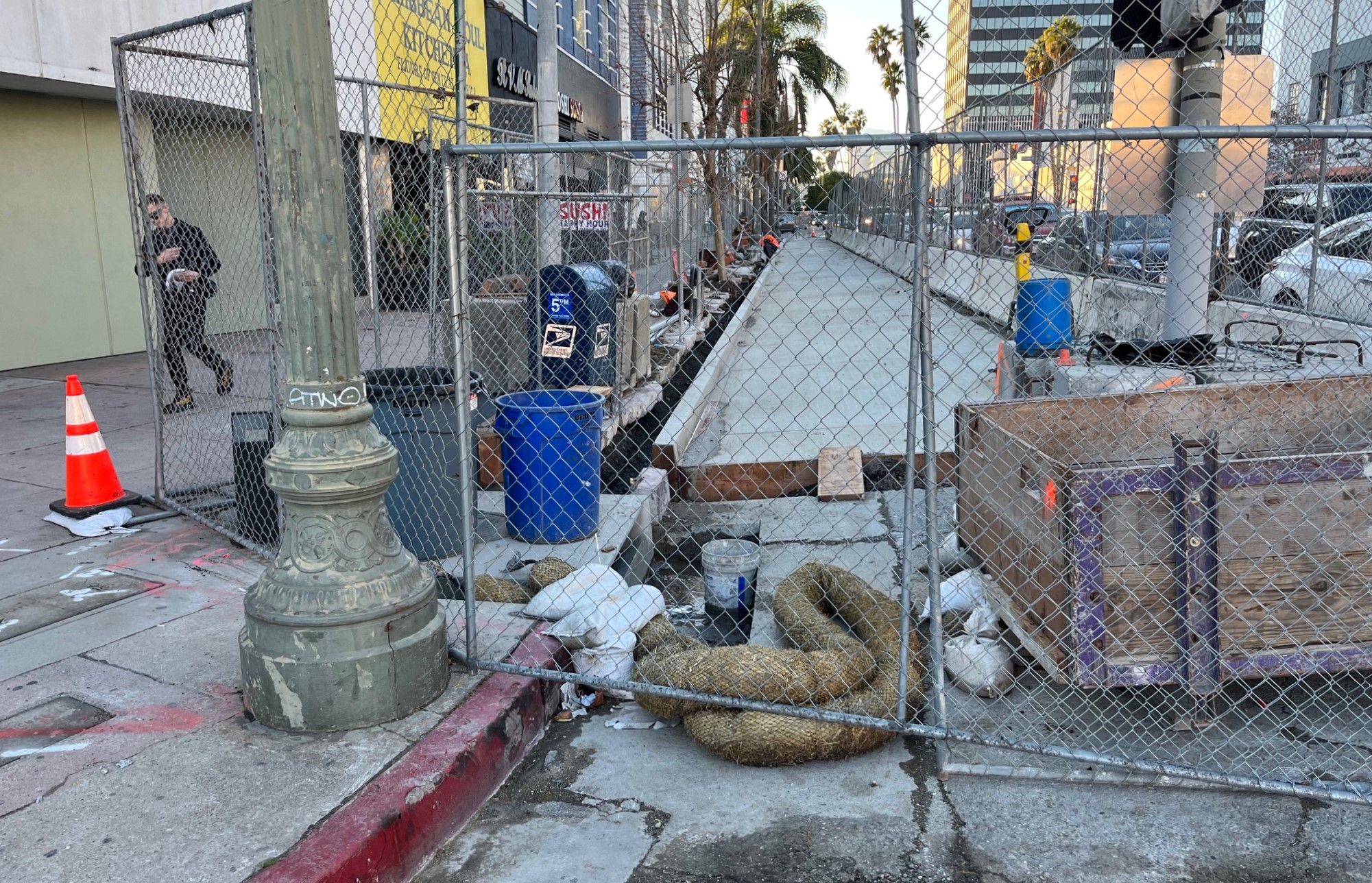Metro subway construction underway on Wilshire Boulevard again shows that Metro is ignoring L.A. City Council approved road widths, instead favoring wide streets to support car capacity - instead of walkability.
On Wilshire Boulevard and possibly on La Brea Avenue, Metro, in collaboration with L.A. City departments, is ignoring the city's Mobility Plan. Similar to excess roadway width at recent Regional Connector stations downtown, Metro is restoring roads to be wider than their approved widths.
In downtown L.A., Metro widened streets that were supposed to be narrowed or left the same width. On Wilshire, city plans mandate that streets should be narrowed and the sidewalks widened. But at its stations, Metro is restoring prior roadway widths - ignoring the city's required narrowing.
Streetsblog and others have noted that this sort of anti-pedestrian design makes for a dreadful dangerous walking experience at stations.
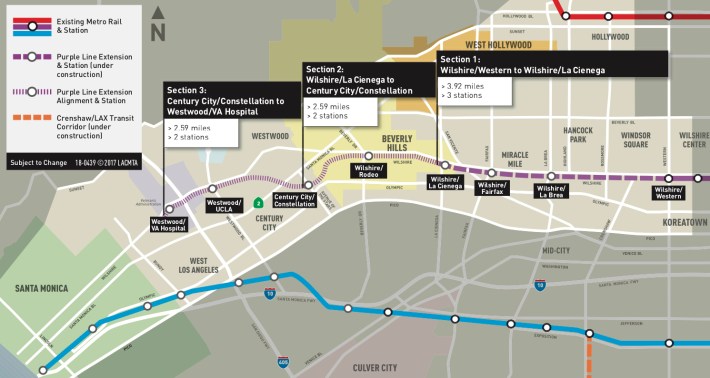
Metro is about 90 percent done with Westside Purple Line Extension Section 1 (WPLE1) construction, with new stations expected to open in 2025. Construction had excavated portions of Wilshire Boulevard at future station sites. As work nears completion, Metro is now in the process of street restoration.
In the city of Los Angeles, WPLE1 adds two new stations: Fairfax and La Brea.
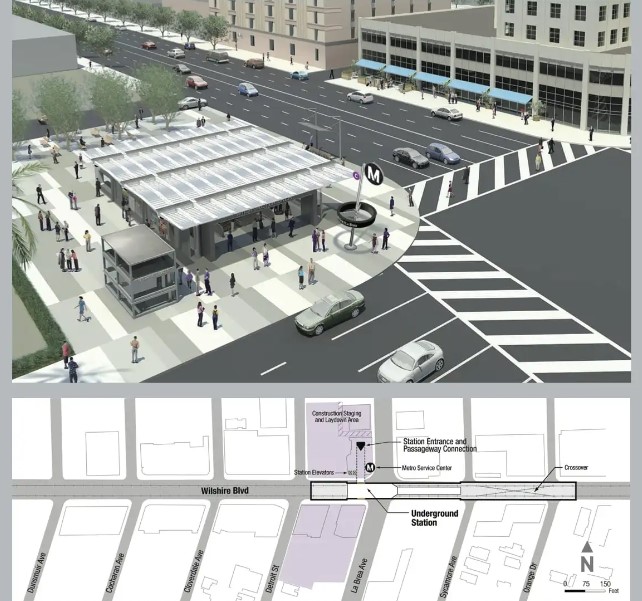

When significant construction is undertaken on L.A. streets, the city requires that the street be brought into compliance with current street standards. This often results in automatic street widening, which supports more driving at the expense of walkability.
The city's Mobility Plan includes the Citywide General Plan Circulation System, which specifies how wide each street should be. The plan shows a designation, like "Avenue I," which corresponds to a street width listed in the city's Standard Street Dimensions.
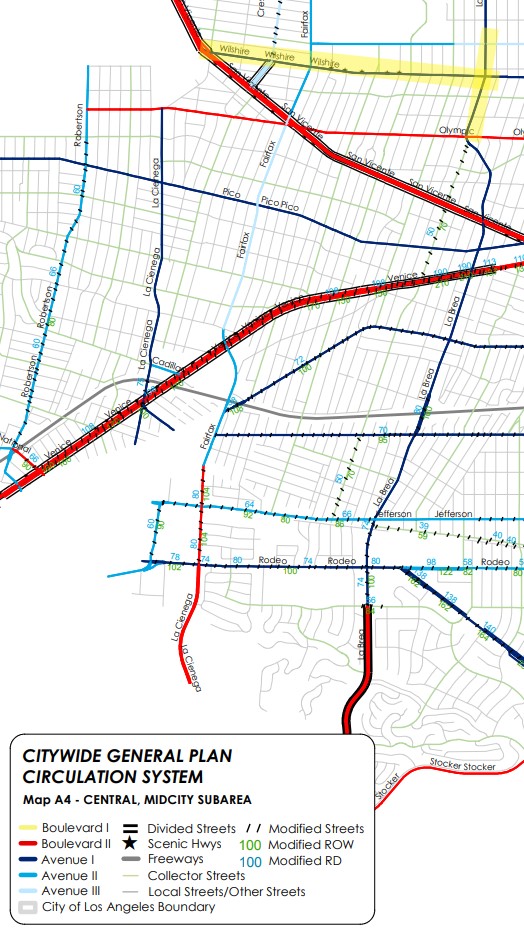
In the WPLE1 project area, the city Mobility Plan classifies both Wilshire and La Brea as "Avenue I" streets.

The city's street standards show that an "Avenue I" street should have a 70-foot roadway and two 15-foot sidewalks.
Prior to Metro WPLE1 construction, here are the street widths where Metro is rebuilding curbs as part of street reconstruction:
- Wilshire - from
SycamoreMansfield Avenue to Cloverdale Avenue (at La Brea Station) and San Diego Way to Spaulding Avenue (at Fairfax Station) - existing 75 feet wide [and wider, 80+ feet, in front of newer museum buildings] - La Brea - from 6th Street to Wilshire - existing 70 feet wide
- La Brea - from Wilshire to 8th St - existing 85 feet wide
According to L.A.'s council-approved street width plans, Metro WPLE1 construction should be narrowing Wilshire's roadway from 75 feet to 70 feet - and widening the sidewalk.
Similarly, Metro should widen the sidewalk on La Brea.
Spoiler: all that sidewalk widening isn't happening.
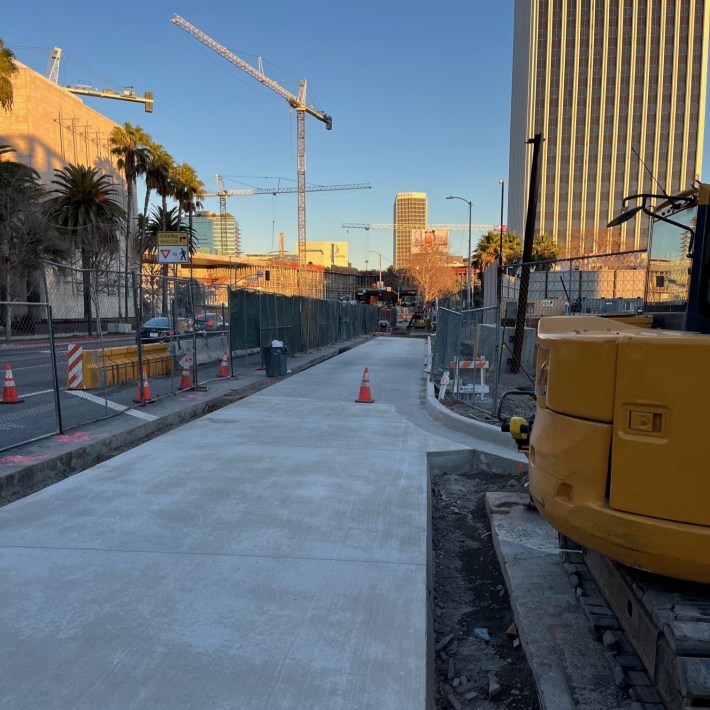
Street and curb construction is already well underway on Wilshire, and Metro is building a 75-foot roadway, five feet wider than the city's standards.
If a developer did this, the city would insist that the developer re-do their curb/sidewalk/street construction. If a developer (such as Metro) doesn't want to widen or narrow, they can ask the city for an exemption, which would need to be approved by the city's Bureau of Engineering (BOE), generally after review by the city's Transportation Department (LADOT) which would specify any changes to lane configurations. Exemptions appear to be fairly common for small developments; the city almost never approves roadway narrowing for just one lot on a block (it does commonly approve one lot widening).
Metro is rebuilding curbs on about a half-mile of Wilshire. Yesterday, Streetsblog inquired to Metro, LADOT, and BOE if Metro sought - and if the city approved - any exemptions to street width standards on this project. LADOT responded that any final city approval would be from BOE, but SBLA has received no response from Metro or BOE at press time.
So, widening Wilshire sidewalks may be a lost cause at this point. Metro has already poured new concrete curbs for nearly all but one block of Wilshire.
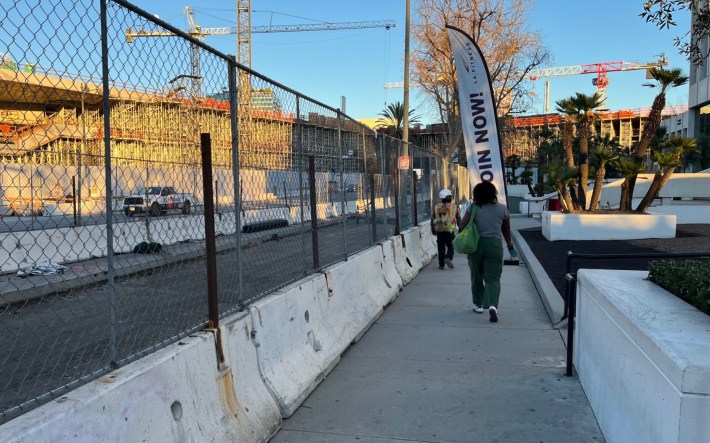
Then there's La Brea.
If there's a place where roadway narrowing really makes sense it's this part of La Brea, at the new station. In the past La Brea was widened for half a block south of Wilshire, across the street from the future Metro Station.

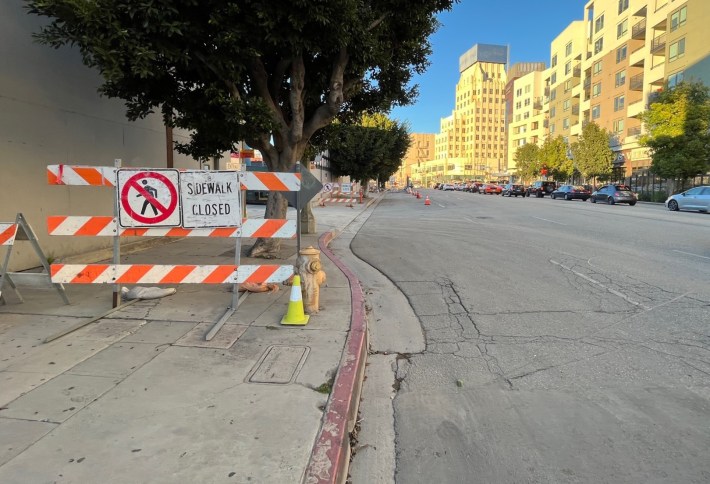
In some locations, the city is reluctant to narrow roadways because it would make for inconsistent street widths. For La Brea, narrowing the roadway would make an inconsistent street more consistent. If the city follows council-approved street widths, then La Brea (south of Wilshire) would be narrowed. Narrower roadways and wider sidewalks would make the station area safer for Metro riders.
Metro WPLE1 street reconstruction on La Brea hadn't started as of Tuesday. It's not clear if Metro plans to widen or narrow La Brea, or to just re-do curbs at the existing width. Streetsblog asked Metro, LADOT, and BOE what the plans are for those two blocks, and no information was available at press time.
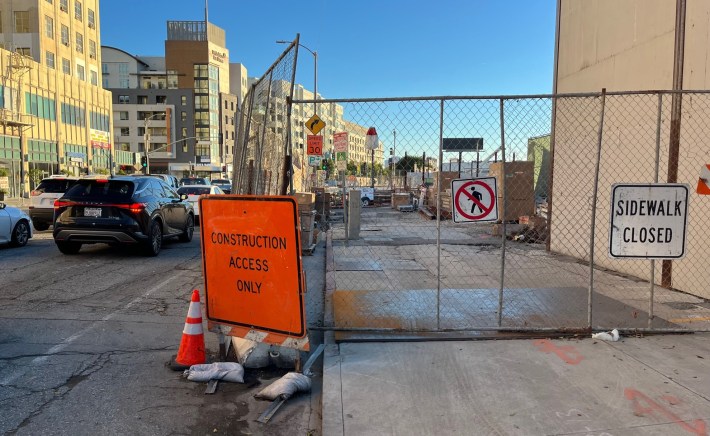
Lastly, some have suggested that Metro rail construction only replaces streets as they were prior to construction. (For example, Metro CEO Stephanie Wiggins has asserted that Metro was only responsible for "the replacement of street elements, in-kind, disturbed during construction.") But this has never been the case for Metro rail construction.
For Metro construction on the Regional Connector, the K/Crenshaw Line, the E/Expo Line, the G/Orange Line, the B/Red Line, etc. Metro widened numerous streets (in some cases adding new roads) - at Metro Stations - endangering riders by expanding car capacity and car traffic. All this car-centric widening was based on L.A. City street standards.
But it appears these sorts of street modifications are a one-way street that only leads to more car traffic. When L.A. City standards mandated wider streets, Metro complied with street standards, widening streets. When city plans mandate wider sidewalks and narrower roadways, Metro ignores the plans - to the detriment of its own riders.
